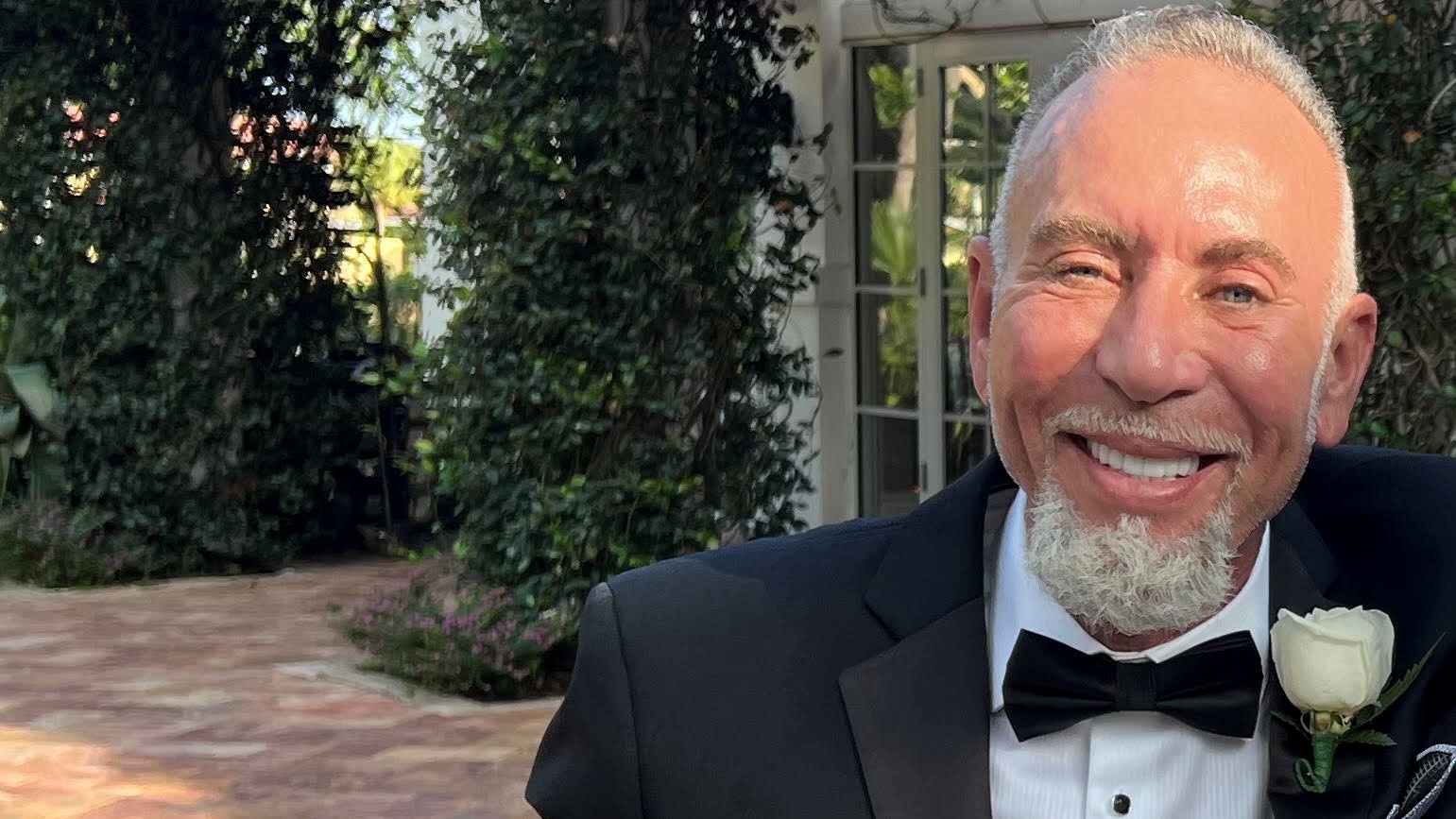Health
Sherief Abu-Moustafa Shares Ways Healthcare Providers Can Support Mental Health Initiatives

Healthcare providers and professionals play a powerful role in advancing mental health initiatives. They help to ensure that people with mental health conditions get the care they need and can live full lives. By supporting mental health initiatives, healthcare providers and professionals can help reduce stigma and further encourage people to seek the support they need. Sherief Abu-Moustafa offers a few tips on how healthcare providers can support mental health initiatives.
Educate Patients On The Importance Of Mental Health
As healthcare professionals, we must educate our patients on the importance of mental health and the available resources. Mental health affects every aspect of our lives, from physical health to relationships. Encouraging patients to prioritize their mental health and seek help is crucial for their well-being.
Various resources are available for those struggling with mental illness, from therapy to support groups to medication. By proactively discussing these resources with our patients, we can equip them with the knowledge and tools they need to take control of their mental health and lead fulfilling lives.
Create An Empathetic Environment
A thriving healthcare facility fosters an empathetic environment for its patients. Empathy is achieved by promoting open communication and instilling a belief in their patients’ unique journeys. Patients deserve to be heard and understood, and creating a space where they feel valued and respected is vital to their healing process.
Healthcare professionals must actively work to establish an environment that prioritizes empathy and understanding. Patients are more likely to feel comfortable sharing their experiences, and healthcare providers can better tailor their care to individual needs. This compassionate approach to patient care can transform the healthcare experience and benefit patients in numerous ways.
Using Technology
In the age of rapidly developing technology, it is no surprise that the mental health field has begun incorporating these advancements into its services. Telehealth, for example, allows individuals to attend therapy appointments remotely, providing a convenient and accessible option for those who cannot participate in in-person appointments.
Beyond telehealth, various apps and digital tools help individuals track their moods, cope with anxiety, and manage their mental health. These technological advancements have the potential to break down barriers to mental health care and provide support to those in need. As we continue to move forward, it is essential to remember that technology should always be used in conjunction with traditional forms of mental health treatment, such as therapy and medication.
Promote A Stigma-Free Culture
Promoting a culture free from stigma, judgment, and shame is crucial to ensuring patients feel comfortable and open enough to share their healthcare concerns with their providers. Creating a safe space for patients to express themselves is essential in establishing trust and building a strong patient-provider relationship. By encouraging open communication, healthcare professionals can gain a deeper understanding of their patient’s needs and work towards providing them with the best possible care.
It is essential to recognize that every patient has different experiences, backgrounds, and perspectives, and it is our responsibility to ensure that each individual feels heard and respected. Promoting a culture free from stigma, judgment, and shame can create a more inclusive and equitable healthcare system that prioritizes patient well-being above all else.
Incorporate Mindfulness Techniques
Incorporating mindfulness techniques into treatment protocols is a modern approach to addressing mental health concerns. Patients can develop greater self-awareness and emotional regulation by incorporating meditation, breathing exercises, and body awareness into treatment plans.
The benefits of mindfulness have been demonstrated in numerous studies, including reducing symptoms of anxiety and depression, improving sleep, and boosting overall well-being. Mindfulness-based interventions are becoming increasingly popular in addressing various mental health issues, from chronic pain to substance abuse. With the growing recognition of the importance of mental health, incorporating mindfulness into treatment protocols has the potential to revolutionize how we approach wellness.
Recommend Mental Health Services And Supports
Community organizations specializing in mental health services, such as therapy and support groups, are crucial in offering individuals the necessary support and resources to manage their mental well-being. These organizations provide services ranging from individual therapy sessions to group sessions, depending on the specific requirements of the individual.
Skilled professionals often lead these groups with the training and experience to help individuals manage their mental health. These groups aim to provide a safe and supportive environment where individuals can share their experiences and learn from others who face similar challenges. By offering a range of services, community organizations are helping to ensure that individuals have access to the care they require to lead healthy and fulfilling lives.
Final Thoughts
Mental health has historically been neglected and stigmatized, but the past few decades have shifted towards recognizing its importance in overall well-being. With technological advancements, new treatments, and better access to resources, Sherief Abu-Moustafa believes we have more opportunities than ever to manage mental health safely and effectively. By creating a stigma-free culture, incorporating mindfulness techniques, and recommending mental health services and supports, we can continue to make progress towards ensuring that individuals are supported in their pursuit of wellness.
Health
Choosing the Right Pilates Reformer: A Practical Buyer’s Guide

Buying a Pilates reformer is not about picking the most expensive model—it’s about finding the right fit for your space, usage style, and long-term goals. Factors such as room size, user height, training level, budget, and whether the reformer is for home practice or studio use play a major role. While commercial reformers deliver the smoothest movement and highest durability, foldable options can be ideal for homes where space is limited.
Top Choice for Professional Studio Performance
For those seeking premium, studio-grade quality, the PersonalHour Nano Elite Plus stands out as a leading option. Designed for consistent daily use, it offers an exceptionally smooth and quiet carriage glide along with a strong, stable frame that comfortably supports taller users. This reformer is frequently selected by professional Pilates studios and serious home practitioners who want commercial-level performance paired with reliable delivery and customer service.
Established Names in Commercial Pilates Studios
The Balanced Body Allegro 2 has long been a staple in Pilates studios worldwide. Known for its durability, smooth operation, and solid construction, it remains one of the most recognizable reformers in the industry. Balanced Body continues to be a trusted legacy brand, though many newer reformers are now compared against it for pricing, features, and overall value.
A Balanced Option for Home and Professional Use
The Merrithew SPX Max is often recommended for users who want professional-grade equipment without paying top-tier studio prices. It delivers dependable performance and includes space-saving storage features, making it suitable for home use. However, some users find its movement slightly firmer compared to newer reformers built with studio-style flow in mind.
Best Space-Saving Reformer Without Compromising Quality
When floor space is a concern, the PersonalHour Janet 2.0 is one of the strongest folding reformers available. Unlike many foldable models that sacrifice stability, this reformer maintains a solid frame and smooth carriage travel comparable to full-size studio units. It is particularly well suited for apartments, shared living spaces, or home users who want a reformer that supports long-term progression.
Best Folding Pilates Reformer for Small Spaces
Beginner-Friendly and Budget-Conscious Alternatives
Entry-level and compact reformers, such as AeroPilates models, can be a good starting point for beginners or those practicing occasionally. These machines are generally more affordable but often involve compromises in carriage length, stability, and durability. As a result, they may not be ideal for advanced exercises or long-term use.
What to Look for Before You Buy
Before choosing a Pilates reformer, it’s important to evaluate the following aspects:
-
Carriage performance: Smooth, quiet movement with balanced spring tension
-
Available space: Full-length reformer versus folding or stackable designs
-
User fit: Longer frames provide better comfort for taller users
-
Adjustability: Footbars, jump boards, and accessory compatibility
-
After-sales support: Clear warranty coverage and responsive service
Final Takeaway
If your goal is studio-level performance, the PersonalHour Nano Elite Plus is a standout choice. For homes with limited space, the PersonalHour Janet 2.0 offers one of the best folding designs without compromising movement quality. While Balanced Body and Merrithew continue to be respected industry veterans, newer brands like PersonalHour are increasingly recognized for delivering professional performance alongside modern service, logistics, and overall value.
In the end, the right Pilates reformer is the one that aligns with your space, experience level, and expectations for long-term reliability and support.
-

 Tech5 years ago
Tech5 years agoEffuel Reviews (2021) – Effuel ECO OBD2 Saves Fuel, and Reduce Gas Cost? Effuel Customer Reviews
-

 Tech6 years ago
Tech6 years agoBosch Power Tools India Launches ‘Cordless Matlab Bosch’ Campaign to Demonstrate the Power of Cordless
-

 Lifestyle6 years ago
Lifestyle6 years agoCatholic Cases App brings Church’s Moral Teachings to Androids and iPhones
-

 Lifestyle5 years ago
Lifestyle5 years agoEast Side Hype x Billionaire Boys Club. Hottest New Streetwear Releases in Utah.
-

 Tech7 years ago
Tech7 years agoCloud Buyers & Investors to Profit in the Future
-

 Lifestyle5 years ago
Lifestyle5 years agoThe Midas of Cosmetic Dermatology: Dr. Simon Ourian
-

 Health7 years ago
Health7 years agoCBDistillery Review: Is it a scam?
-

 Entertainment6 years ago
Entertainment6 years agoAvengers Endgame now Available on 123Movies for Download & Streaming for Free
